What is a Capacity Factor?
Wind turbines convert the kinetic energy in moving air into rotational energy, which in turn is converted to electricity. Since wind speeds vary from month to month and second to second, the amount of electricity wind can make varies constantly. Sometimes a wind turbine will make no power at all. This variability does affect the value of the wind power, but not in the way many people expect. This article will give you an overview of what the capacity factor is and why it is important in wind power systems.
Definition
Capacity factor is the ratio of the actual energy produced in a given period, to the hypothetical maximum possible, i.e. running full time at rated power.
Example:
Suppose you have a generator with a power rating of 1500 kW. Hypothetically if it ran at full power for 24 hours a day for 365 days, that would be:
 What are common values for capacity factor?
What are common values for capacity factor?
All power plants have capacity factors, and they vary depending on resource, technology, and purpose. Typical wind power capacity factors are 20-40%. Hydro capacity factors may be in the range of 30-80%, with the US average toward the low end of that range. Photovoltaic capacity factors in Massachusetts are 12-15%. Nuclear capacity factors are usually in the range of 60% to over 100%, and the national average in 2002 was 92%. The capacity factors of thermal plants cover a wide range; base-loaded thermal power plants (e.g. large coal) may often be in the range of 70-90%, and a combined cycle gas plant might be 60% depending on gas prices, whereas power plants in the role of serving peak power loads will be much lower. One might expect a new biomass thermal plant to have an 80% capacity factor.
Is capacity factor the same as efficiency?
No, and they are not really related. Efficiency is the ratio of the useful output to the effort input – in this case, the input and the output are energy. The types of efficiency relevant to wind energy production are thermal, mechanical and electrical efficiencies. These efficiencies account for losses, most of which turn into heat in the atmosphere and water. For instance, the average efficiency of the US electricity generation infrastructure is about 35% – this is because in most thermal plants, about two thirds of the input energy are wasted as heat into the environment. The mechanical conversion efficiency of commercial wind turbines is a fairly high, in the range of 90%.
Wind power plants have a much lower capacity factor but a much higher efficiency than typical fossil fuel plants. A higher capacity factor is not an indicator of higher efficiency or vice versa.
Is a higher capacity factor “better”?
Within a given technology or a given plant, yes, you can generally say that a higher capacity factor is better and in particular, more economical. But it does not make sense to compare capacity factors across technologies, because the economics of both production and capacity are so different from one technology to the next – the capacity factor is just one of many factors in judging if a power plant is feasible. Instead, more useful is to compare the cost of producing energy among the various technologies.
The wind does not always blow; sometimes a wind power plant stands idle. Furthermore, wind power is really not “dispatchable” – you can’t necessarily start it up when you most need it. As wind power is first added to a region’s grid, it does not replace an equivalent amount of existing generating capacity – i.e. the thermal generators that already existed will not immediately be dismantled.
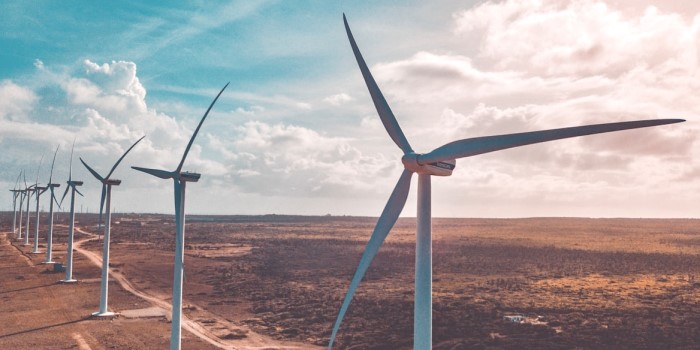
Does intermittency imply that wind power cannot have beneficial impact on the environment?
No. We need to distinguish here between capacity and production. The first is the amount of installed power in a region, and is measured in MW. Production is how much energy is produced by that capacity, and is measured in MWh.
While wind power does not replace an equal amount of fossil-fuel capacity, it does replace production – for every MWh that is produced by a wind turbine, one MWh is not produced by another generator. The damage done by our existing electricity generation is primarily a function of production, not capacity. Burning less coal has a positive environmental impact, even if the coal plant is not shut down permanently
In Massachusetts, the avoided production would mostly be from fossil-fuel plants. So for every MWh that is produced by a wind turbine here, that causes about two thirds of a ton of CO2 not to be produced.
Definition
Capacity factor is the ratio of the actual energy produced in a given period, to the hypothetical maximum possible, i.e. running full time at rated power.
Example:
Suppose you have a generator with a power rating of 1500 kW. Hypothetically if it ran at full power for 24 hours a day for 365 days, that would be:
(1500 kW) x (365 x 24 hours) = 13,140,000 kW-hrin one year. Suppose that in fact it made 3,942,000 kWh in one year. Then in that year, the generator operated at a:
13,140,000 / 3,942,000 = 30%capacity factor that year.

All power plants have capacity factors, and they vary depending on resource, technology, and purpose. Typical wind power capacity factors are 20-40%. Hydro capacity factors may be in the range of 30-80%, with the US average toward the low end of that range. Photovoltaic capacity factors in Massachusetts are 12-15%. Nuclear capacity factors are usually in the range of 60% to over 100%, and the national average in 2002 was 92%. The capacity factors of thermal plants cover a wide range; base-loaded thermal power plants (e.g. large coal) may often be in the range of 70-90%, and a combined cycle gas plant might be 60% depending on gas prices, whereas power plants in the role of serving peak power loads will be much lower. One might expect a new biomass thermal plant to have an 80% capacity factor.
Is capacity factor the same as efficiency?
No, and they are not really related. Efficiency is the ratio of the useful output to the effort input – in this case, the input and the output are energy. The types of efficiency relevant to wind energy production are thermal, mechanical and electrical efficiencies. These efficiencies account for losses, most of which turn into heat in the atmosphere and water. For instance, the average efficiency of the US electricity generation infrastructure is about 35% – this is because in most thermal plants, about two thirds of the input energy are wasted as heat into the environment. The mechanical conversion efficiency of commercial wind turbines is a fairly high, in the range of 90%.
Wind power plants have a much lower capacity factor but a much higher efficiency than typical fossil fuel plants. A higher capacity factor is not an indicator of higher efficiency or vice versa.
Is a higher capacity factor “better”?
Within a given technology or a given plant, yes, you can generally say that a higher capacity factor is better and in particular, more economical. But it does not make sense to compare capacity factors across technologies, because the economics of both production and capacity are so different from one technology to the next – the capacity factor is just one of many factors in judging if a power plant is feasible. Instead, more useful is to compare the cost of producing energy among the various technologies.
The wind does not always blow; sometimes a wind power plant stands idle. Furthermore, wind power is really not “dispatchable” – you can’t necessarily start it up when you most need it. As wind power is first added to a region’s grid, it does not replace an equivalent amount of existing generating capacity – i.e. the thermal generators that already existed will not immediately be dismantled.

Does intermittency imply that wind power cannot have beneficial impact on the environment?
No. We need to distinguish here between capacity and production. The first is the amount of installed power in a region, and is measured in MW. Production is how much energy is produced by that capacity, and is measured in MWh.
While wind power does not replace an equal amount of fossil-fuel capacity, it does replace production – for every MWh that is produced by a wind turbine, one MWh is not produced by another generator. The damage done by our existing electricity generation is primarily a function of production, not capacity. Burning less coal has a positive environmental impact, even if the coal plant is not shut down permanently
In Massachusetts, the avoided production would mostly be from fossil-fuel plants. So for every MWh that is produced by a wind turbine here, that causes about two thirds of a ton of CO2 not to be produced.
Post a Comment:
You may also like:

Featured Articles
What is Wind Energy?
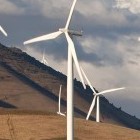 Wind is moving air. We can use the energy in wind to do work. Early Egyptians used the wind to sail ships on the Nile River. ...
Wind is moving air. We can use the energy in wind to do work. Early Egyptians used the wind to sail ships on the Nile River. ...
 Wind is moving air. We can use the energy in wind to do work. Early Egyptians used the wind to sail ships on the Nile River. ...
Wind is moving air. We can use the energy in wind to do work. Early Egyptians used the wind to sail ships on the Nile River. ...Wind Farm Siting, Installation and ...
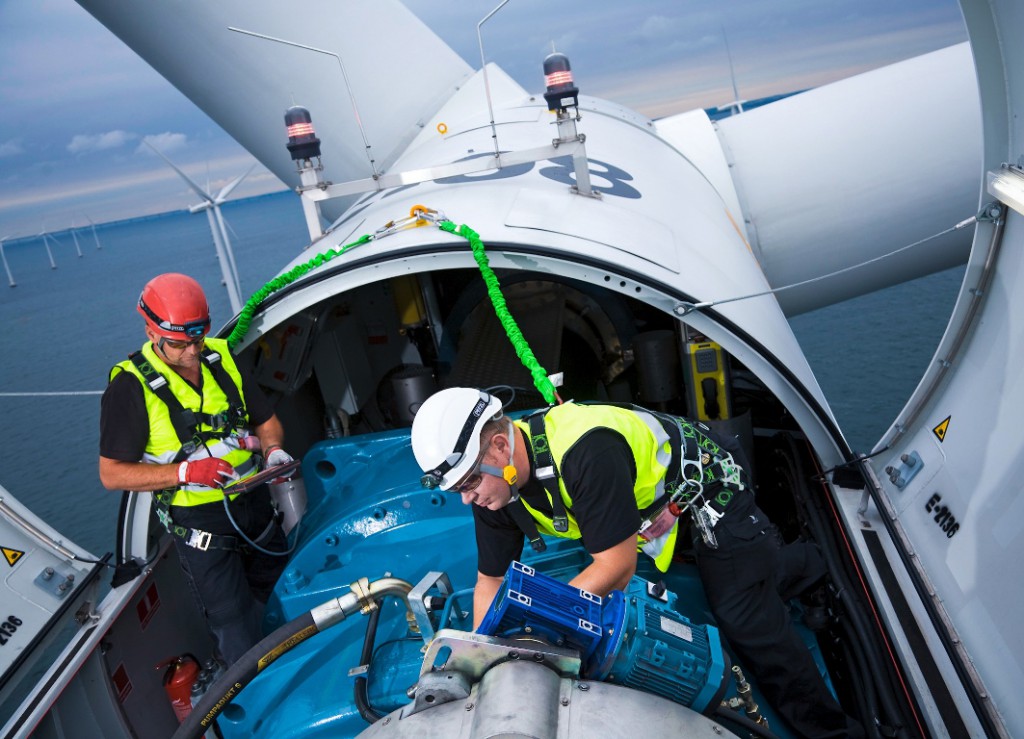 Before wind turbines can be installed, the most appropriate location or locations for them needs to be determined. The ...
Before wind turbines can be installed, the most appropriate location or locations for them needs to be determined. The ...
 Before wind turbines can be installed, the most appropriate location or locations for them needs to be determined. The ...
Before wind turbines can be installed, the most appropriate location or locations for them needs to be determined. The ...Basics of Wind Energy Production
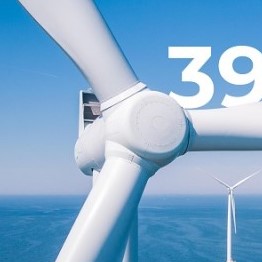 In the United States, most wind energy is commercially generated for delivery and sale on the grid. Wind projects vary in ...
In the United States, most wind energy is commercially generated for delivery and sale on the grid. Wind projects vary in ...
 In the United States, most wind energy is commercially generated for delivery and sale on the grid. Wind projects vary in ...
In the United States, most wind energy is commercially generated for delivery and sale on the grid. Wind projects vary in ...Basics of Wind Farms
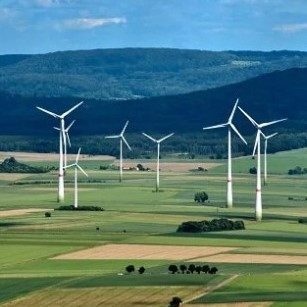 Throughout history, wind has been used to move grain mills or push the vessels that sailed the seas. However, it was not ...
Throughout history, wind has been used to move grain mills or push the vessels that sailed the seas. However, it was not ...
 Throughout history, wind has been used to move grain mills or push the vessels that sailed the seas. However, it was not ...
Throughout history, wind has been used to move grain mills or push the vessels that sailed the seas. However, it was not ...What is a Capacity Factor?
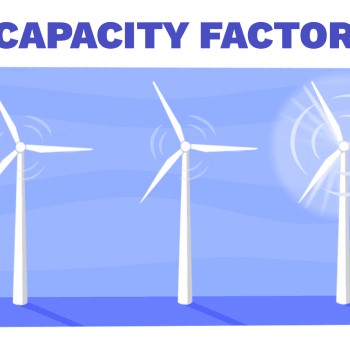 Wind turbines convert the kinetic energy in moving air into rotational energy, which in turn is converted to ...
Wind turbines convert the kinetic energy in moving air into rotational energy, which in turn is converted to ...
 Wind turbines convert the kinetic energy in moving air into rotational energy, which in turn is converted to ...
Wind turbines convert the kinetic energy in moving air into rotational energy, which in turn is converted to ...